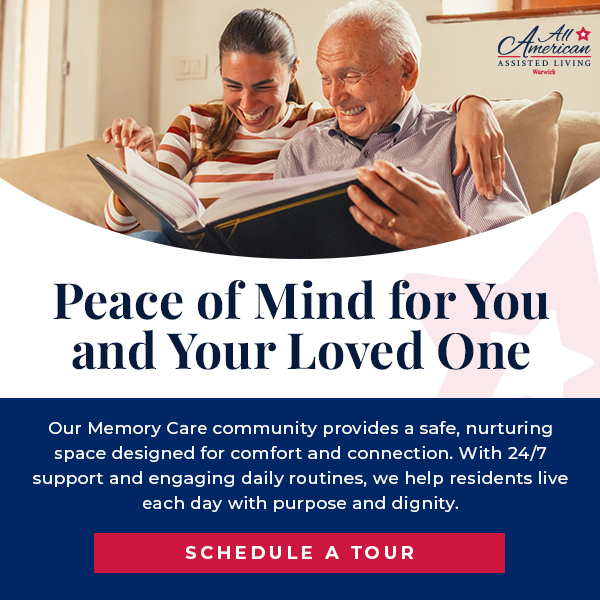When someone you love is experiencing memory changes, you want to find ways to help them feel happy, engaged, and connected. It’s challenging to know where to start, but you’re not alone. Purposeful engagement can make a meaningful difference, especially when the right activities help them feel connected to their world.
The most supportive memory care activities share a few qualities: they’re simple, pressure-free, and tailored to each person’s abilities. Creative projects, sensory experiences, gentle routines, and community-based activities can all help your loved one stay engaged.
Key Takeaways
- Purposeful activities can lift a person’s mood and give them a sense of accomplishment.
- Creative projects like music and art offer powerful ways to communicate and express feelings.
- Familiar daily routines, such as folding laundry or spending time in a garden, can provide comfort and structure.
- Social get-togethers and group games help build friendships and reduce feelings of isolation.
Why Activities Are So Important in Memory Care
Activities do more than fill time. They provide structure, comfort, and a sense of accomplishment. For people living with memory loss, familiar motions and recognizable experiences help reduce frustration and make each day feel more predictable and supportive.
Engagement also builds meaningful connections. Whether it’s a song from their younger years or a small role in a shared task, these moments foster confidence and give your loved one a way to participate in daily life. With the right support, activities become opportunities to feel included, respected, and understood.
What Activities Are Ideal for Seniors in Memory Care?
The best memory care activities meet people where they are. They rely on simple, familiar actions and offer plenty of flexibility. This encourages your loved one to participate at their own pace.
Music and Familiar Melodies
Music often brings forward memories that feel comforting and recognizable. Listening to favorite songs, tapping along to the rhythm, or enjoying a small family sing-along can reduce stress and brighten the day. Even when words are hard to find, melodies can spark warm emotional responses.
Creative Arts and Hands-On Projects
Simple art projects—like watercolor painting, collage-making, or shaping soft modeling clay—give your loved one a way to express themselves without pressure. Hands-on activities stimulate the senses and help people stay focused on the moment. The emphasis should always be on enjoyment, not perfection.
Reminiscence and Story-Based Activities
Looking through photo albums, sharing memories, or talking about old family traditions helps affirm a person’s identity. These familiar stories provide comfort and can lead to heartfelt, relaxed conversations. A structured reminiscence activity can help your loved one feel seen and valued.
Nature and Garden Moments
Spending time with plants offers a calming way to reconnect with the outdoors. These activities don’t have to be complex, either. Something as simple as watering flowers, potting small herbs, or enjoying a stroll through a secure garden can make a big difference.
Sensory Experiences and Touch-Friendly Activities
Sensory experiences work well for people who benefit from gentle, quiet engagement. When memory loss or cognitive decline is involved, these activities can be soothing and fun. You can try activities that use soft fabrics, textured objects, and familiar scents to provide comforting sensory input.
Social Games and Group Connection
Games like bingo, large-print cards, and simple puzzles bring people together in a low-pressure way. These are great opportunities to bring shared laughter and friendly interactions to your loved one’s life. Just as importantly, these activities give residents something enjoyable to look forward to in their daily lives.

Choosing the Right Memory Care Community
Finding a community that supports your loved one’s needs starts with understanding what will help them thrive. The right environment should feel warm, structured, and easy to participate in, especially when daily engagement plays such an important role.
Look at the Available Activities and Amenities
A strong memory care program offers a variety of activities that appeal to different interests and ability levels. Look for communities that provide daily structure, creative opportunities, and simple ways for residents to participate. A well-rounded calendar is a good sign that engagement is a priority in a potential community.
Assess the Level of Care Offered
Memory care should balance safety with personal dignity. When touring, ask how the team adapts activities for different cognitive stages and how they support residents who may need extra guidance. You want a community that understands the nuances of memory loss and offers care that meets your loved one’s needs.
Check Out the Community Life
Daily life should feel welcoming, relaxed, and easy to join. So, during a visit, pay attention to how residents interact, how team members support participation, and whether activities are offered consistently. A warm, friendly environment can help your loved one feel more at home.
Find Your Loved One the Care They Deserve
Choosing memory care is a meaningful step toward ensuring your loved one feels supported, connected, and respected. Activities play a large role in creating that sense of comfort, and the right community will offer plenty of opportunities to stay involved in familiar and enjoyable moments. However, activities are only one piece of a bigger puzzle.Your loved one deserves a place that supports them every day—a place like ours here at All American Assisted Living at Warwick. Here, our team is dedicated to providing a place where every resident can find purpose and connection. Schedule a visit with us today to learn more about what we can offer your loved one!






